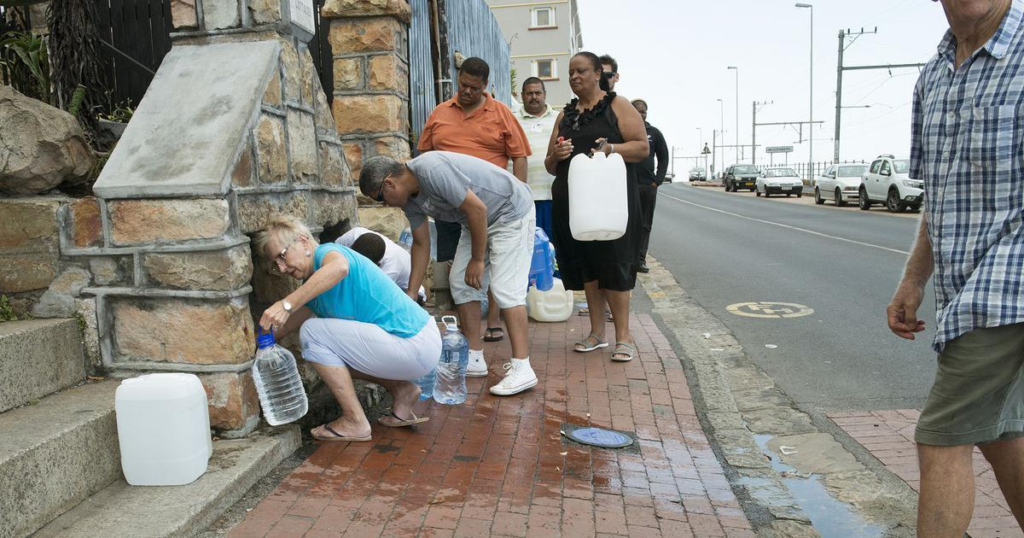Global shortage of clean water
First of all, let us inform you about the current situation on our planet Earth:
- 72% of the Earth is covered with water
- 97% of that water is undrinkable ocean water
- 70% of our sweet potable water is enclosed in ice caps
- 0,5 % of the world's potable water is easily accessible
- 6 countries (Brazil, Russia, Canada, Indonesia, China & Colombia ) have access to over 50% of the world's potable water reserves
- 33% of the world population lives in “water stressed “ countries. These are countries where water consumption exceeds the amount of drinking water available. Countries with medium to high water stress consume about 20% more water than their available supply
The human right to safe drinking water was first recognized by the UN General Assembly and the Human Rights Council as part of binding international law in 2010.
Climate change Affecting water supply
Water and climate change are inextricably linked. Climate change affects the world’s water in complex ways. From unpredictable rainfall patterns to shrinking ice sheets, rising sea levels, floods and droughts – most impacts of climate change come down to water (UN Water).
Water scarcity
- About two billion people worldwide don’t have access to safe drinking water today (SDG Report 2022), and roughly half of the world’s population is experiencing severe water scarcity for at least part of the year (IPCC). These numbers are expected to increase, exacerbated by climate change and population growth (WMO)
- Only 0.5 per cent of water on Earth is useable and available freshwater – and climate change is dangerously affecting that supply. Over the past twenty years, terrestrial water storage – including soil moisture, snow and ice – has dropped at a rate of 1 cm per year, with major ramifications for water security (WMO)
- Water supplies stored in glaciers and snow cover are projected to further decline over the course of the century, thus reducing water availability during warm and dry periods in regions supplied by melt water from major mountain ranges, where more than one-sixth of the world’s population currently lives (IPCC)
- Sea-level rise is projected to extend salinization of groundwater, decreasing freshwater availability for humans and ecosystems in coastal areas (IPCC)
- Limiting global warming to 1.5°C compared to 2°C would approximately halve the proportion of the world population expected to suffer water scarcity, although there is considerable variability between regions (IPCC)
- Water quality is also affected by climate change, as higher water temperatures and more frequent floods and droughts are projected to exacerbate many forms of water pollution – from sediments to pathogens and pesticides (IPCC)
- Climate change, population growth and increasing water scarcity will put pressure on food supply (IPCC) as most of the freshwater used, about 70 per cent on average, is used for agriculture (it takes between 2000 and 5000 liters of water to produce a person’s daily food) (FAO)
What can we do to have sufficient water resources?
- Healthy aquatic ecosystems and improved water management can lower greenhouse gas emissions and provide protection against climate hazards (Water and Climate Coalition)
- Wetlands such as mangroves, seagrasses, marshes and swamps are highly effective carbon sinks that absorb and store CO2, helping to reduce greenhouse gas emissions (UNEP)
- Wetlands also serve as a buffer against extreme weather events (UNEP). They provide a natural shield against storm surges and absorb excess water and precipitation. Through the plants and microorganisms that they house, wetlands also provide water storage and purification
- Early warning systems for floods, droughts and other water-related hazards provide a more than tenfold return on investment and can significantly reduce disaster risk: a 24-hour warning of a coming storm can cut the ensuing damage by 30 per cent (WMO)
- Water supply and sanitation systems that can withstand climate change could save the lives of more than 360,000 infants every year (New Climate Economy report)
- Climate-smart agriculture using drip irrigation and other means of using water more efficiently can help reduce demand on freshwater supplies (UNEP)
What can we do locally to have sufficient water available ?

Leakage rate in water distribution networks world-wide. Average based on country-level leakage percentage estimates weighted by water operational expenses spending by country (data from Global Water Intelligence, 2008; available on-line at www.globalwaterintel.com)

In average, water utilities lose 30% of the water pumped into the water distribution network.

Technimex is specialized on offering total solutions to reduce water losses in the water network, if we don’t loose water through leakage we have more water available and consequently need less water from our resources.
